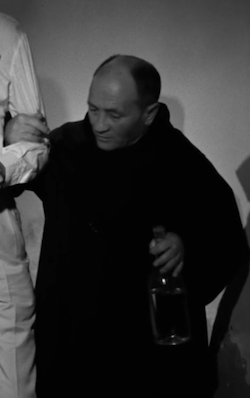
Black on Black — The Three Lives of Ulderico Sciarretta
1.
There are many different shades of black. One is particularly hateful to Italian people and will never fade in the collective memory. During the Fascist regime, black was the color worn by the Italian Fascist militia, the “blackshirts”: a tint evoking violence, repression and abuse, a vision soliciting fear, but also a badge which granted power and rewards for those wearing or supporting it, either by belief or personal advantage. Born on August 26, 1906, Ulderico Sciarretta enlisted in the Fascist party at 16, in 1922, soon after the March on Rome. One might say he was quick in catching the spirit of the time. Then, as he later claimed, he had a “vocational crisis”[1] and enrolled in the navy; he did not make much of a career, though: on the contrary, he ended up on trial for violence and outrage.
In 1937 Sciarretta moved to Turin, posing as an accountant, a professional title the police advised him not to use. He set up a tax advice office which in fact was a front for other types of business, not exactly legal. Then came the September 1943 armistice: following the birth of Mussolini’s short-lived Republic of Salò in Northern Italy, Sciarretta acted as a double agent and took part in Fascist raids against the partisans, as a spy of the infamous Fascist brigade “Ather Cappelli” (one of the members was Mario Volonté, Gian Maria’s father). After the end of the war, he was arrested and taken before the Court of Assizes in Turin, together with other war criminals: he was accused of taking part in the murder of the 25-year-old Agostino Priuli, killed in December 1944 during a raid in a workshop where arms for the partisans were assembled and repaired with the steel provided clandestinely by the Lancia car plant. The newspaper La Nuova Stampa described Sciarretta as follows: “Pale, puny, skinny, he even looks sinister.”[2] A woman testified having seen him railing against dead partisans’ bodies, shouting: “Come, mothers, come and see your bandits!” During the trial, the crowd⎯largely composed of relatives of people arrested, deported, tortured or killed by the defendants⎯yelled out loud, “Give them to us!”

